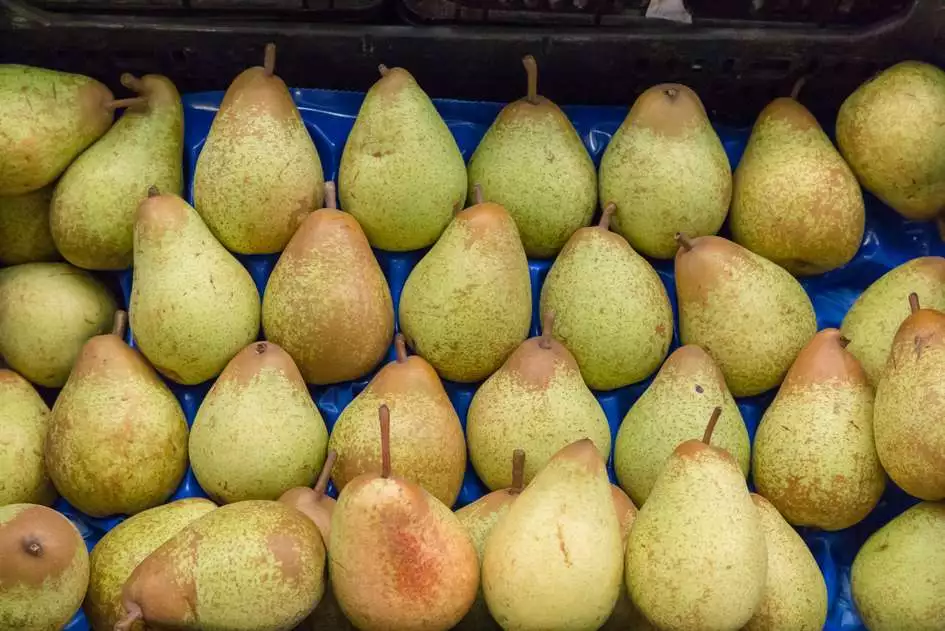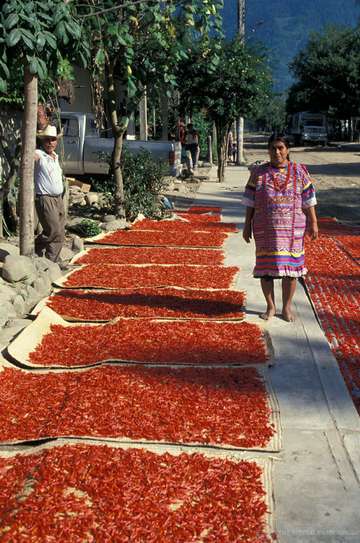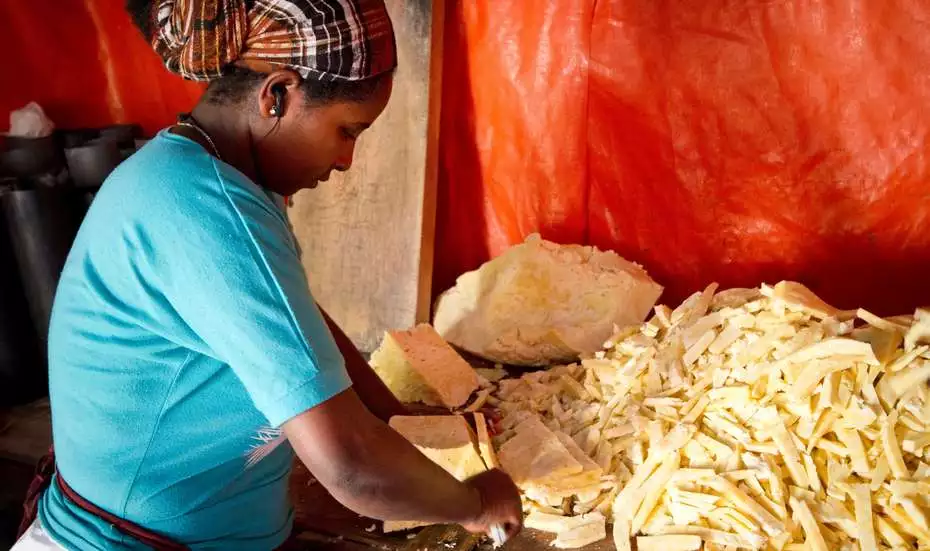Global food supply chains: shock absorbers or cause of price crises and supply shortages?
Welfare effects of world trade help fight hunger. One disadvantage of value chains are fluctuating prices. Where does the instability arise - and who suffers?

In recent years, food supply shortages have become ubiquitous. Consumers in Germany will remember that shortly after Russia's invasion of Ukraine supermarket shelves for sunflower oil were empty because exports from the region did not take place. In parts of North Africa, wheat could no longer be imported, so that bakers, for instance, could no longer accept orders and food security in the region deteriorated. Shortages and price shocks have not been uncommon recently, and not just in the food sector. Many remember the spring of 2020, when the world urgently needed face masks and the producing countries were unable to export sufficiently.
Policymakers essentially came up with a single answer to supply shortages: increase production at home, depend less on trade relations. Local production – of food but also other goods, especially computer chips and semiconductors – is increasingly being promoted around the globe, and imports of such products are being restricted. Combined with environmental concerns and the interest of consumers in "local" value chains for food, many governments have begun to promote such production systems. In Germany, a regulation passed in August calls for the use of organic and locally produced products in canteens and dining halls. In the U.S., the Local Food Purchase Assistance Cooperative Agreement encourages the purchase of local food by public bodies. In addition, last year's Inflation Reduction Act (IRA) entails a $400 billion subsidy of domestic production.
However, we know from trade theory that global value chains and international trade lead to welfare gains. But is it also true that extensive international supply chains cause instability and reduce resilience in food supply? I addressed this question with my colleagues Marc F. Bellemare of the University of Minnesota and Sunghun Lim of Louisiana State University in a new working paper. (Dalheimer, Bernhard, Bellemare, Marc F. and Lim, Sunghun: Global Agricultural Value Chains and Food Prices, Working Paper, 2023).
Food production is becoming increasingly global
Global value chains in the food sector encompass products that cross at least two borders on their way from field to plate. These include, for example, preserved pears harvested in Argentina, shipped to Thailand for processing and packaging and ultimately consumed in Europe or the United States. Another example are North Sea crabs which are caught in the North Sea, pealed in Morocco and ultimately sold and consumed once again in Germany. The share of such global production processes in global trade in food has remained constant at about one third since 1995, while the absolute value of this exchange of goods has doubled over the same period.
The reason for the globalisation of food production is simple: efficiency and increases in disposable income through lower prices. Each stage in the production chain is performed in the most cost-effective location – after the deduction of transport costs. For example, the labor-intensive packing of pears or the peeling of crabs is less expensive in Thailand or Morocco than in the countries where they are harvested or sold. As a result, the price at the checkout is lower, consumers need to spend less money on food. For high-income consumers in industrialised countries, such price effects may be barely noticeable. Consumers with lower incomes – in both developing and developed countries – who spend a larger share of their income on food benefit more from such welfare gains.
We focus on two potential effects in the study. First, price levels: What is the effect of integration into international value chains on real food prices? Lower prices are welfare enhancing for consumers, higher ones for producers. Second, the variability of prices: Does participation in global value chains lead to more or less price stability and thus more predictability for consumers as well as producers? We analyse global value chain data based on trade data provided by the United Nations Conference on Trade and Development (UNCTAD) and food price inflation data from the Food and Agriculture Organisation (FAO) from 2000 to 2015. We are thus dealing with an extended period that does not include recent shocks such as COVID-19 and the Russian invasion.
Globalisation of Food Supply Leads to Lower Prices but Increased Uncertainty
The empirical results of the study show that integration into international value chains leads, on the one hand, to significant reductions in the price of food products worldwide. On average, real food prices decrease by about 2% when the share of food production that is integrated into global value chains increases by 1%. These are consumption gains due to international trade which are a familiar feature of trade theory. They demonstrate the significant welfare effects of globalisation and international trade, which in the past contributed greatly to reducing hunger and poverty and to the achievement of numerous development goals. On the other hand, the study also shows that integration into international value chains leads to increased price instability, i.e., increased uncertainty. For every one percent increase in value added through international supply chains, annual price volatility increases by about 8 percent.
On the one hand, this effect is surprising, since the internationalisation of supply chains presents opportunities for diversification. In the case of unexpected shortfalls in production or harvest, goods and inputs can be sourced from abroad and domestic supply secured, which in turn should stabilise prices. However, the counterargument is that internationalisation of supply chains leads to specialisation. Various stages of production are completed in locations where they are most cost-effective. Industries or manufacturers in other regions that offer the same processes are no longer competitive and disappear. This specialisation means food supply is less resilient in unexpected crises.
International food value chains are concentrated, not diversified
In fact, food production is geographically concentrated, not diversified. The probability that a random agricultural product imported by two different countries is sourced from the same country of origin is 75% on average.
Companies aim for the minimisation of production costs. This means that input materials are purchased where the price is lowest. Manufacturing companies individually try to stabilise long term supply by diversifying suppliers. However, this is not done collectively to an extent that would be necessary to ensure national supply security, for example. Instead of broadening supply chains, producers are increasingly focusing on the location or region that offers the cheapest inputs.
High-value food processing offers better income opportunities, but bears higher risk of disruption
In a further step, we also examine in the study the difference between upstream processing stages – that is, addition of value that happens shortly after harvest and is typically associated with lower margins – and downstream processing steps – that is, addition of value that happens shortly before sale and consumption and is typically associated with higher margins. The results show that downstream participation in value chains is associated with greater price reductions and higher uncertainty than upstream value chains.
In other words, internationalisation of high-value food processing is more profitable for consumers, but also entails more risks in terms of changing prices or bottlenecks in supply than the internationalisation of stages at the beginning of supply chains, such as the trade in raw materials. The explanation for this result lies in the length of value chains. The more processing stages are internationalised, the more efficiencies are accumulated. However, the risks of disruption of each stage of production also accumulate.
Developing countries benefit least from global food value chains
Another partial result of the study shows that these two opposing effects vary regionally. In developing countries, especially in sub-Saharan Africa, the weakest price reduction effects and strongest effects of increasing volatility were observed. As a result, consumers in countries with low average income benefit least from global value creation, while at the same time consumers and producers in these countries experience the highest volatility associated with it. The reason ca be found in the instability of supply chains. International trade increasingly takes place between neighboring countries – or partners that are geographically close. Many developing countries, especially in sub-Saharan Africa, are exposed to more extreme weather events and other environmental risks. These regions more frequently suffer droughts, storms, floods, earthquakes or volcanic eruptions. On top of this, political instability or even military conflict is not unusual, which can cause a loss of production. Close regional trade links and distribution of food products mean a greater risk of disruption at various stages of production along the value chain compared to stable industrialised countries.
This effect is all the more serious when considering the relationship between producers and consumers. Lower food prices are good for consumers and bad for producers. Price instability is a problem for producers in particular, as increased volatility hinders planning and thus investment in production. While in many developed countries the proportion of citizens who earn their income in the food sector is around 1-3%, this proportion is often higher than 50% in developing countries and can reach 70%. This means that the effects of lower prices and higher volatility, which are already more pronounced in the countries of the global South, also lead to welfare losses. The combined effect of these two phenomena is that developing countries benefit less from integration into global food value chains than industrialised countries.
This conclusion is of great significance for development policy. Often, the establishment of high-value manufacturing industries, including food, is suggested for developing countries in the hope of achieving high profit margins. This means establishing manufacturing businesses more closely related to the sale or consumption of food – not only to improve availability but also to create better-paying jobs. The study confirms that such industries help to do just that. However, the risk is also significantly higher in low-income countries, especially in sub-Saharan Africa, than it is in developed countries. Policies aimed at building industries that add value in the global South should therefore always include strategies to secure supply chains.
Policies should seek diversification of value chains, not protectionism
Food chain instability has led governments in many countries to focus on domestic production to minimize dependence on foreign suppliers. This is of at best marginal benefit when looking to overcome the problematic concentration of supply chains since only a single supplier is added to the portfolio of potential suppliers, namely the domestic market. Like all other markets, this is exposed to the risk of supply disruption. As is the case with an equity portfolio, supply can be stabilised by increasing the number of suppliers and ensuring that their risks of disruption are as independent of each other as possible. For instance, importing from different regions of the world to minimize the impact of weather-related risks. Measures that diversify imports can be implemented with minimal loss of trade profit and could provide the basis for many developing countries to establish diversified and high-value production sectors.






